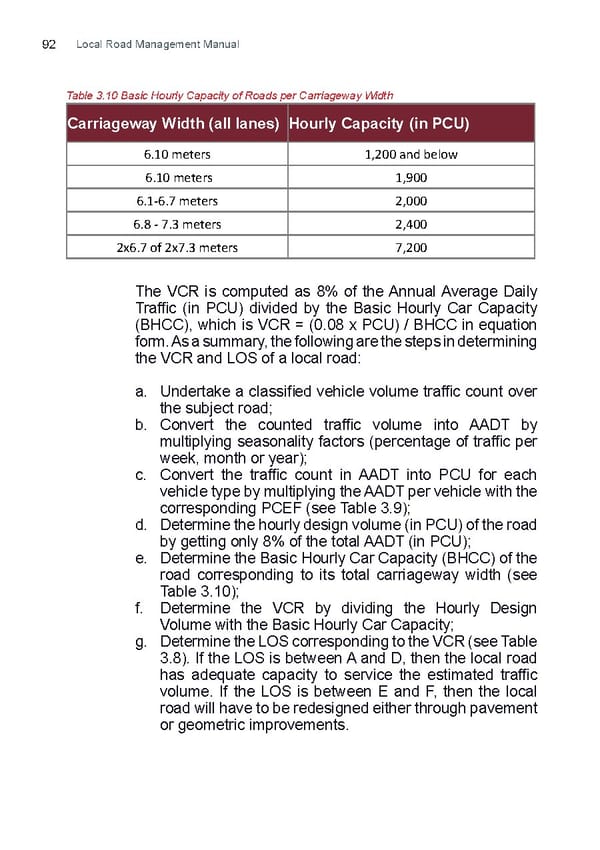Local Road Management Manual 92 Table 3.10 Basic Hourly Capacity of Roads per Carriageway Width Carriageway Width (all lanes) Hourly Capacity (in PCU) 6.10 meters 1,200 and below 6.10 meters 1,900 6.1-6.7 meters 2,000 6.8 - 7.3 meters 2,400 2x6.7 of 2x7.3 meters 7,200 The VCR is computed as 8% of the Annual Average Daily Traffic (in PCU) divided by the Basic Hourly Car Capacity (BHCC), which is VCR = (0.08 x PCU) / BHCC in equation form. As a summary, the following are the steps in determining the VCR and LOS of a local road: a. Undertake a classified vehicle volume traffic count over the subject road; b. Convert the counted traffic volume into AADT by multiplying seasonality factors (percentage of traffic per week, month or year); c. Convert the traffic count in AADT into PCU for each vehicle type by multiplying the AADT per vehicle with the corresponding PCEF (see Table 3.9); d. Determine the hourly design volume (in PCU) of the road by getting only 8% of the total AADT (in PCU); e. Determine the Basic Hourly Car Capacity (BHCC) of the road corresponding to its total carriageway width (see Table 3.10); f. Determine the VCR by dividing the Hourly Design Volume with the Basic Hourly Car Capacity; g. Determine the LOS corresponding to the VCR (see Table 3.8). If the LOS is between A and D, then the local road has adequate capacity to service the estimated traffic volume. If the LOS is between E and F, then the local road will have to be redesigned either through pavement or geometric improvements.
 Local Road Management Manual Page 92 Page 94
Local Road Management Manual Page 92 Page 94